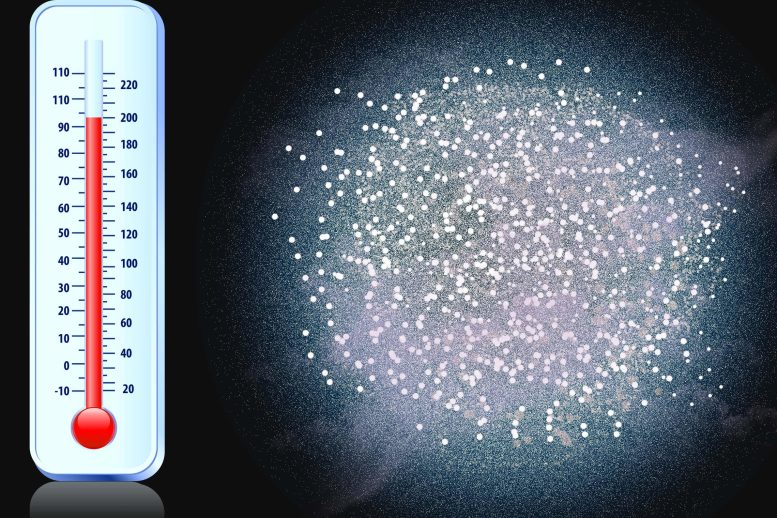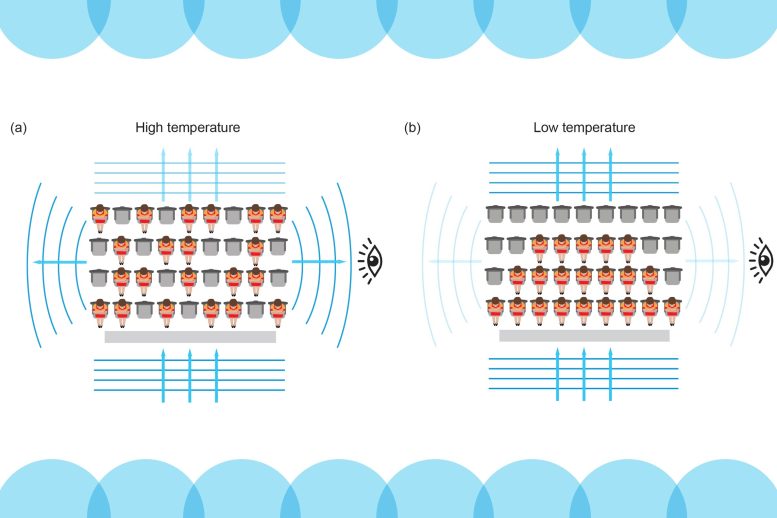MIT Physicists Use Fundamental Atomic Property To Turn Matter Invisible

A new study confirms that as atoms are chilled and squeezed to extremes, their ability to scatter light is suppressed. Credit: Christine Daniloff, MIT
How Ultracold, Superdense Atoms Become Invisible
A new study confirms that as atoms are chilled and squeezed to extremes, their ability to scatter light is suppressed.
The principle of Pauli blocking can be illustrated by an analogy of people filling seats in an arena. Each person represents an atom, while each seat represents a quantum state. At high temperatures (a), atoms are seated randomly, so every particle can scatter light. At low temperatures (b), atoms crowd together. Only those with more room near the edge can scatter light. Credit: Courtesy of the researchers
In their experiments, the physicists observed this effect in a cloud of lithium atoms. As they were made colder and more dense, the atoms scattered less light and became progressively dimmer. The researchers suspect that if they could push the conditions further, to temperatures of MIT Physicists Use Fundamental Atomic Property To Turn Matter Invisible

